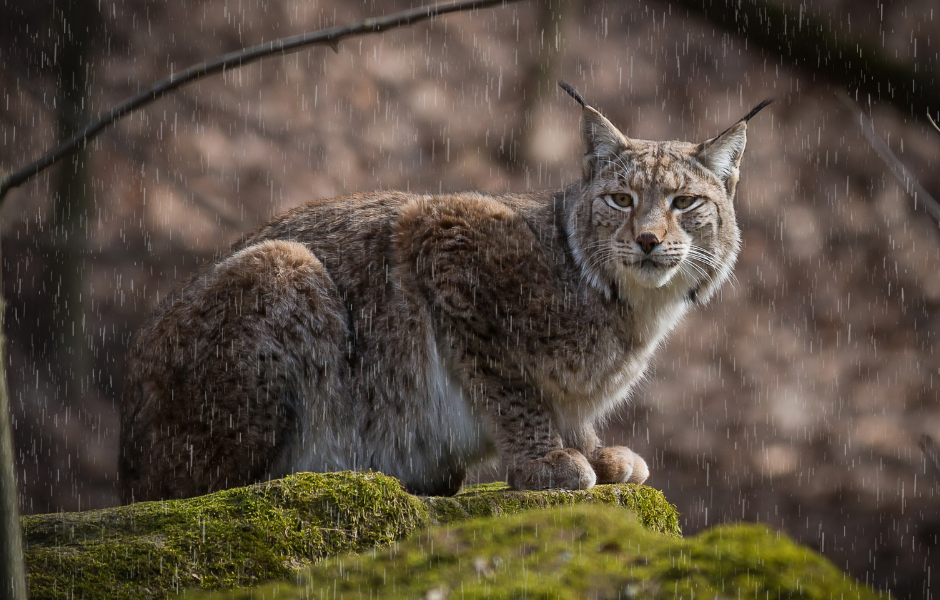
This children’s article, Hidden hunters: It’s International Lynx Day!, has been written for native English speakers and learners of English as a second or foreign language. It can help children practise reading and comprehension, learn useful vocabulary, and explore the natural world. Written by Mark Pulley, a writer and teacher who creates fun and informative news articles for English learners.
The mysterious cat that stays out of sight
They’re shy, they’re silent, and they live alone in forests. They’re also very good at hiding, which makes the lynx one of the most mysterious cats in the world.
But today, they’re in the spotlight. June 11 is International Lynx Day, a time to learn about this amazing animal and how we can help save it from disappearing forever.
What is a lynx?
Lynxes are medium-sized wild cats with short tails, long legs, and tufts of fur on their ears. There are four types: the Eurasian lynx, the Iberian lynx, the Canadian lynx, and the bobcat. All belong to the same family, but the two in Europe, the Eurasian and Iberian lynx, are the ones in most danger.
These cats prefer to stay hidden in forests, coming out mostly at night. They live alone, and they’re excellent hunters. With amazing eyesight and super hearing, a lynx can spot a mouse from 250 metres away! As well as rodents, they also love to eat rabbits and small deer.
Why do lynxes need help?
Lynxes have lost much of their home because humans have cut down so many forests. Without forests, there’s also less food for them to hunt. Back in the 1800s, people hunted lynxes so much that they nearly disappeared from Europe completely.
By the early 2000s, the Iberian lynx was the most endangered cat in the world, with fewer than 100 left. Since then, scientists have worked hard to protect them. Now, there are around 400 Iberian lynxes and about 9,000 Eurasian lynxes, but they still need our help.
What can we do?
International Lynx Day was created in 2017 by the 3Lynx Project to help raise awareness and support. People around the world take part by:
- Watching lynx documentaries, like Leap of the Lynx or The Elusive Iberian Lynx.
- Learning and sharing fun lynx facts. Did you know “lynx” comes from a Greek word meaning “to shine”? That’s because of their glowing eyes!
- Donating to lynx charities, like WWF, EuroNatur, or The Big Cat Sanctuary in the UK.
You could even throw a lynx-themed party with cat ears, forest decorations, and nature games, just maybe not actual rabbits!

Article vocabulary list
- Lynx – A medium-sized wild cat with a short tail and pointed ears.
- Tufts – Small bunches of hair or fur, like the ones on a lynx’s ears.
- Nocturnal – Active at night, not during the day.
- Solitary – Likes to live alone, not in a group.
- Prey – Animals that are hunted for food.
- Endangered – In danger of dying out or becoming extinct.
- Reintroduce – To return animals to places where they used to live.
- Conservation – The act of protecting nature and wildlife.
Comprehension questions
Just click the plus (+) to see the answer
1. What kind of animal is a lynx?
a) A type of monkey
b) A wild cat
c) A forest bird
Answer: b) A wild cat
2. Why is International Lynx Day important?
a) To teach people how to hunt lynxes
b) To sell lynx costumes
c) To raise awareness and protect lynxes
Answer: c) To raise awareness and protect lynxes
3. How does a lynx find its prey?
a) By smelling it from far away
b) With strong legs and powerful claws
c) With excellent eyesight and hearing
Answer: c) With excellent eyesight and hearing
4. What almost made the Iberian lynx go extinct?
a) Cold winters
b) Losing its forest home and food
c) Other bigger cats
Answer: b) Losing its forest home and food
5. What is one way people celebrate International Lynx Day?
a) Taking lynxes for a walk
b) Learning and sharing lynx facts
c) Catching a lynx in the wild
Answer: b) Learning and sharing lynx facts

Mark is a writer and EFL teacher from England with eight years’ experience. He’s passionate about travel, sport (especially football), animals, nature, and history, and enjoys helping children explore the world through language and learning.




